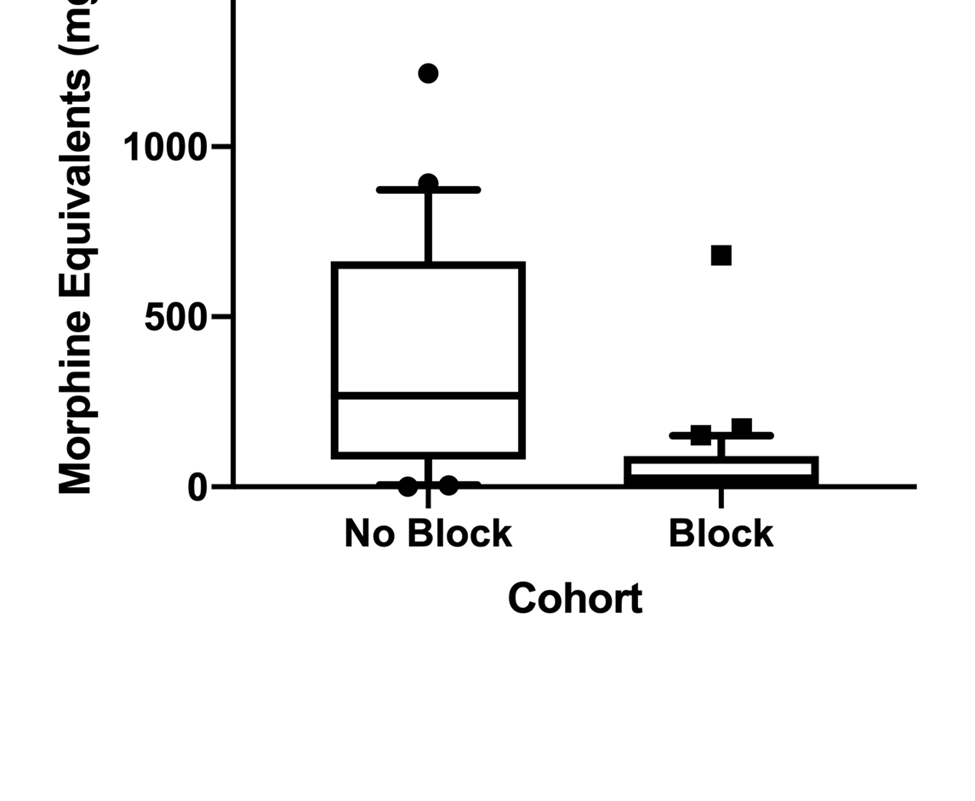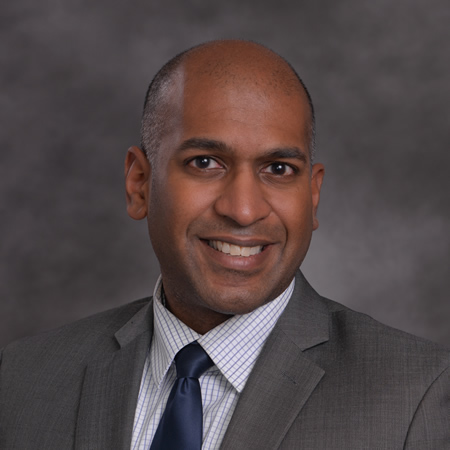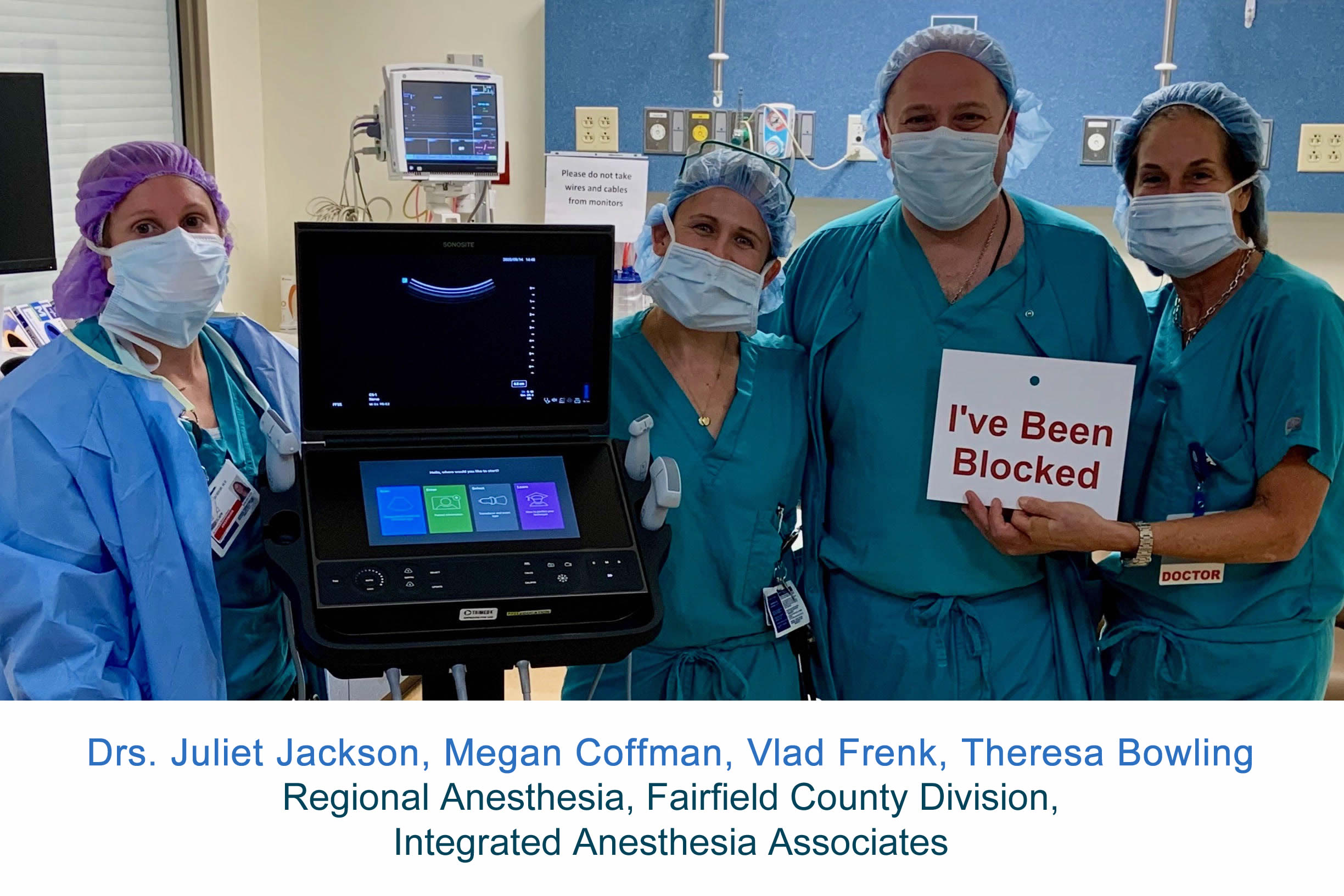An Interview with Dr. David Maduram, newly appointed Director of Research, Fairfield County Division, Integrated Anesthesia Associates.

Pictured from left to right: Drs. David Maduram, Theresa Bowling, Vlad Frenk, Regional Anesthesia Fairfield County Division, IAA
 “This has never been done before, and quite frankly, it changes everything”.
“This has never been done before, and quite frankly, it changes everything”.
“This” refers to advanced regional anesthesia techniques currently being performed and research by the IAA team at the Connecticut Orthopedic Institute, and that’s great news for patients everywhere who routinely receive orthopedic surgery.
Why?
Because the status quo has shown that patients who have orthopedic surgery often suffer from significant surgical pain and decreased mobility after their operation. This robust pain can routinely lead to dissatisfaction and significant consumption of opioids, which can have a wide array of side effects like nausea and constipation.
The paradigm-changing research in regional anesthesia led by Theresa Bowling, MD and Vlad Frenk MD and their team, including David Maduram MD PhD, is indeed a game-changer, improving the quality of patient outcomes across the board.
 Q: Please tell us about your new role as Director of Research, Fairfield County Division, Integrated Anesthesia Associates
Q: Please tell us about your new role as Director of Research, Fairfield County Division, Integrated Anesthesia Associates
A: My research role started pretty organically — At the Connecticut Orthopedic Institute, we utilize advanced regional anesthesia techniques that aren’t commonly used at other community hospitals. One example of this is our use of our erector spinae (ESP) blocks for posterior spine surgery. Anecdotally, some of our nurses noted that there was a huge change in patient comfort, ambulation, and satisfaction after receiving an ESP nerve block.
We started looking back at the data to see if there was really a true difference, and our research division was born! At present, I work with a great team including Dr. Theresa Bowling, Dr. Vlad Frenk, Dr. Rob Suriani, Swaroopa Vaidya MS, and Jenn Cortina RN]. As Director of Research for IAA, I work on designing our clinical studies, assist with data collection from retrospective chart reviews, help author publications / presentations, perform statistical analysis, and collaborate with industry representatives on clinical trials.
Q. Why this work is so important and exciting?
A: Great question. Two main exciting things about this –– first of all, we’re doing a lot of new blocks that haven’t been done before. In the past, patients have relied on going to tertiary centers in Boston and New York to get the latest and greatest in regional anesthesia. This research program here shows that patients can access cutting edge treatments also in Connecticut.
The other exciting thing about this is that a lot of research in advanced regional anesthesia in the past focuses on patients in academic centers — by doing research at local community hospital, we can quantify that these blocks are appropriate and cost-effective in regional community hospitals, where most patients in the US receive anesthesia. Hopefully, this will change the landscape on how patients are treated across the nation.
Q. What is your background in research?
A: Although I personally love clinical anesthesia, I’ve always had a passion for numbers. During my undergraduate studies, I minored in mathematics and completed a senior thesis focusing on a branch of statistics called survival analysis. At the University of Illinois, I subsequently completed my joint MD/PhD in this field, taking hours of coursework in applied mathematics and computational statistics. I used this training to do research after medical school, both during residency at the Massachusetts General Hospital (Boston, MA) and during my pediatric fellowship at Columbia New York Presbyterian Hospital (New York, NY). My research training has proved to be a great fit for analyzing the large streams of data that we look at in the Connecticut Orthopedics Institute.
Q. What has IAA’s Fairfield County Research Division done so far?
A: Our most promising project at present is our posterior spine research initiative. We recently wrapped up a retrospective case-control study of erector spinae blocks and how they impact opioid consumption. In brief, during May 2020, Dr. Bowling implemented a clinical protocol where all our posterior spine patients received an erector spinae nerve block. Using chart review, we collected information on total opioid consumption in morphine equivalent units in our June spine cases, and compared them to historical controls done in January. After controlling for confounding and performing regression analysis, we found that our ESP blocks reduced 24 hour opioid consumption by more than 80 percent.
More specifically, average 24 hour consumption for patients with no block was 377.6 morphine equivalent units, versus 59.1 morphine equivalent units with an ESP block (see figure below). Although our nurses on the floor told us that they found a significant decrease in opioid usage, it was really eye-opening to be able to quantify the scale on how much this protocol benefited patients.
Q: What are the team’s next steps – what can we look forward to seeing soon?
A: That’s a great question. We’re currently working on three clinical research projects – we’re continuing our prior research on lumbar ESP (erector spinae) blocks for posterior spine surgery and fleshing it out. We’re working on IRB approval for a prospective study, which will hopefully pave the way for publications and change of practice in other centers. We’re also working on a pilot study for using cervical ESP (erector spinae) blocks for cervical fusion surgery, as well as a pilot study for PENG / LFN blocks for anterior hip replacement. This is our research division’s first year, so there’s still a matter of laying infrastructure for expansion and working with industry, but hopefully there are bright things in our future to come.
Q: What are your thoughts about your IAA COI team?
A: We have a dream team! I can’t say enough good things about Theresa, Vlad, Rob, Jenn, and Swaroopa. I want to say a big thank you first to Jenn and Swaroopa for doing the hard work of importing patients, manually going charts, and submitting IRBs – a lot of the analysis that we do wouldn’t be possible without their dedication and time, and there are a lot of things that go on behind the scenes in order to produce the results that we get. At the same time, I want to also thank Theresa, Vlad and Rob for providing the ‘big picture’ and guidance that we need in order to do rigorous statistical analysis. I personally am grateful for their clinical experience and commitment to excellent patient care.
Learn more about Dr. Maduram, and stay tuned for more exciting news and announcements from the IAA Regional Anesthesia Research Team, Fairfield Division.


